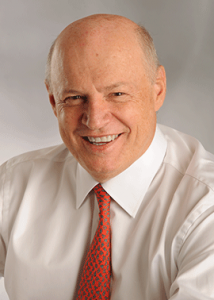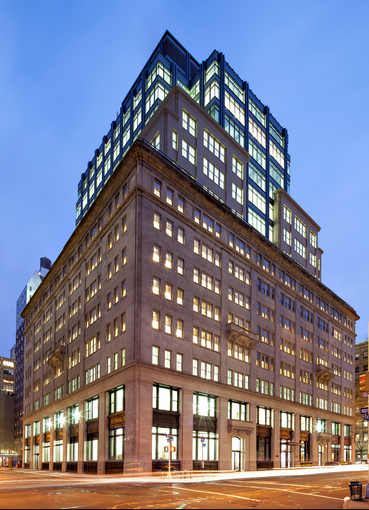About two months ago, on a Sunday evening on a rural road in Quebec, Manuel Delisle lost his temper in a road rage incident.
The other driver, Karine Cyr, later claimed that Delisle had cut her off and was driving erratically. So Cyr and her husband followed Delisle down a dead-end road.
What happened next was captured on video. The 37-year-old Delisle, who worked as a tree pruner for the City of Montreal, walked up to Cyr’s parked car and pointed a roaring chainsaw at the driver’s window, making threatening gestures for about 30 seconds before walking away.
The video, which Cyr took with her cellphone, made Delisle a social media sensation in Canada. It also, in all likelihood, made him the first investor in a New York trophy skyscraper to be arrested for a road-rage incident involving a chainsaw in Quebec.
That’s because like anyone who is employed in Quebec, a share of his wages was going into a pension fund and distributed to various investment arms, including Ivanhoe Cambridge, which handles the fund’s real estate investments.
That means Delisle holds a microscopic financial stake in the office tower 3 Bryant Park, which Ivanhoe Cambridge bought for $2.2 billion in February in partnership with Callahan Capital Properties.
Delisle’s involvement is a small part of a giant cloud of mystery that surrounds Ivanhoe Cambridge’s activities in New York. Over the past five years, the firm has invested more than $3.8 billion in Manhattan properties, according to Real Capital Analytics — more than real estate giants like Related Companies, Brookfield Properties or American Realty Capital.
No other pension fund manager has spent nearly as much. And yet, little is known about the firm behind these deals. While Related’s Stephen Ross, Extell’s Gary Barnett or Witkoff Group’s Steve Witkoff are local celebrities, regularly donning the covers of business publications, few here could point out Ivanhoe Cambridge’s CEO Daniel Fournier in a crowd. In fact, few even know what kind of company it is or where it gets its money.
The firm seems to like it that way. The company declined to make any of its executives available for interviews, as did its lawyers and its investment partner, Callahan.
The most a Google search reveals is brief news reports on its deals and a few related press releases.
Yet in many ways, the Canadian behemoth exemplifies the globalized age of New York real estate. Its troubles during the financial crisis and the lessons it took away say a lot about why Manhattan trophy properties have become such popular investments.
“You hear about them going into deals, but you don’t hear about them exiting,” said Ron Solarz, executive managing director at Eastern Consolidated. “My sense is they are very shrewd investors with a long-term horizon.”
Big buys only
Ask brokers about what makes Ivanhoe Cambridge unique, and almost all of them point to its seemingly limitless funds.
“They are just this massive company that can write these incredible checks,” said Solarz.
The company is flush with cash because it’s the real estate subsidiary of Quebec’s public pension-fund manager, La Caisse de Depot et Placement du Quebec (the Caisse for short), which pools the money from about 30 public pension and insurance funds. In Quebec, as in the rest of Canada, public pension plans are mandatory for all workers.

Ivanhoe Cambridge CEO Daniel Fournier
The Caisse’s assets total $200 billion, making it the second largest Canadian pension program, behind the Canada Pension Plan, with $226.8 billion, according to research organization Sovereign Wealth Fund Institute. Ivanhoe Cambridge’s assets alone total $35 billion, according to its website.
Despite its size, the fund has only a limited presence in major real estate markets and doesn’t have an office in New York.
Instead, it has relied on joint-venture partners for local expertise. In 2007, Ivanhoe Cambridge’s predecessor, Societe Immobiliere Trans-Quebec or SITQ, partnered with SL Green Realty to buy 1515 Broadway. In the following years, it bought about $1 billion worth of New York multifamily properties in a joint venture with Ofer Yardeni’s Stonehenge Partners, including 100 East 20th Street and 330 East 63rd Street.
Most recently, its partner of choice has been Callahan, the Chicago-based private equity real estate firm. The two firms signed a partnership agreement in December 2012. In October 2013, they bought a stake in 1211 Sixth Avenue for $892 million. In June 2014, they bought a stake in Beacon Capital Partners’ 330 Hudson Street, before making their biggest splash to date in 2015 with the purchase of 3 Bryant Park.
And more money could be on the way.
An Ivanhoe Cambridge spokesperson said the Caisse recently increased its real estate investment target, and that New York continues to be an appealing destination.
“We believe that the economic fundamentals are very positive for long-term investment in high-quality office properties in New York,” he said.
Ivanhoe Cambridge did not disclose details of the partnership, but according to sources, Callahan handles much of the operations while Ivanhoe provides the financial firepower.
The spokesperson cited Callahan’s expertise in finding the right investment opportunities, its asset management experience and its skill in closing complex transactions as crucial to Ivanhoe Cambridge’s goal of building a U.S. office portfolio.
Investing in New York is attractive for a massive pension fund like Ivanhoe Cambridge because it allows it to park large sums of money in a single asset.
“The challenge that any large Canadian pension plan has is really getting its hands on enough real estate,” said John Andrew, a professor at Queen’s University’s School of Urban and Regional Planning in Ontario.
He explained that Ivanhoe has huge inflows of cash and a clear target for how much real estate to invest in. The easiest way to meet that target is to go big.
“It’s too cumbersome to mess around with the little stuff, so they are only interested in large buildings and portfolios,” he added.
That’s why Ivanhoe Cambridge goes big on markets where it can invest billions of dollars in a single property, like Manhattan.
The same rule of thumb applies to other pension funds. But while some of them have spent large amounts in Manhattan, none have spent as much on aggregate as Ivanhoe Cambridge. The Montreal-based firm invested $3.8 billion over the past five years, while Ontario’s OMERS invested $2.67 billion and New York’s TIAA-CREF invested $2.6 billion during that same time.
The trauma of 2008
A look at the pension fund’s recent history offers some key clues to its current market behavior.
While it may seem like a fantasy in the U.S. given the political gridlock here, Canada mandates that all workers in the country contribute to a public retirement system, the Canada Pension Plan.
Francophone Quebec, always prone to separatist tendencies, was the only province to opt out of the federal plan when it was established in 1965. Instead, it launched its own version, the Quebec Pension Plan, to be managed by the Caisse.
In 1984, the Caisse founded its first real estate subsidiary, SITQ, which soon began investing in real estate abroad.
Then in 1990, the Caisse acquired the Ivanhoe Corporation, a private shopping center owner. It ran the two subsidiaries separately until 2011 when they were merged under the name Ivanhoe Cambridge. Until then, the Caisse invested in Manhattan real estate through SITQ.

330 Hudson Street
The Caisse, always proud of being distinct from the federal Canadian pension system, often pursued different investment strategies. In 2008, this almost proved fatal.
“They were doing the same things the U.S. investment banks were doing,” said Alan White, a professor at the University of Toronto’s Rotman School of Management. “The Caisse was always very aggressive in its investment strategies and took on a lot of derivative positions. They were very successful, until the financial crisis.”
For firms like Ivanhoe Cambridge, the asset-backed securities that were so popular in the early 2000s likely appeared to be ideal investments. They offered the opportunity to spend large sums of money on an ostensibly stable asset class (real estate), with little management effort. But when the U.S. mortgage bubble burst, that bet backfired.
In 2008 alone, the Caisse incurred staggering losses of $38 billion — a negative return of 26 percent — according to a report in the Globe and Mail at the time. In contrast, other Canadian pension funds reported average losses of only 18.5 percent.
That historic loss likely shaped the Caisse’s current real estate strategy. Although the Ivanhoe Cambridge spokesperson claimed all the losses on paper were recouped since 2008 and that the firm continues to seek out opportunistic and value-add investments with returns north of 10 percent, experts say the firm likely became more cautious.
“I suspect they’ve been asked to cut back on the aggressive strategies,” said University of Toronto’s White.
That seems to offer the best explanation of why Ivanhoe Cambridge is so keen on Manhattan trophy properties.
Class A office buildings in Manhattan are widely considered the safest asset class in the safest real estate market in North America.
Paying $2.2 billion for 3 Bryant Park sounds steep and will not likely lead to sky-high returns, but it’s also unlikely to lead to catastrophic losses of the kind the Caisse incurred in 2008.
For Manuel Delisle, this should be a small comfort. He may lose his job and is facing jail time, but at least he can rest assured that his retirement savings are in safe hands.
